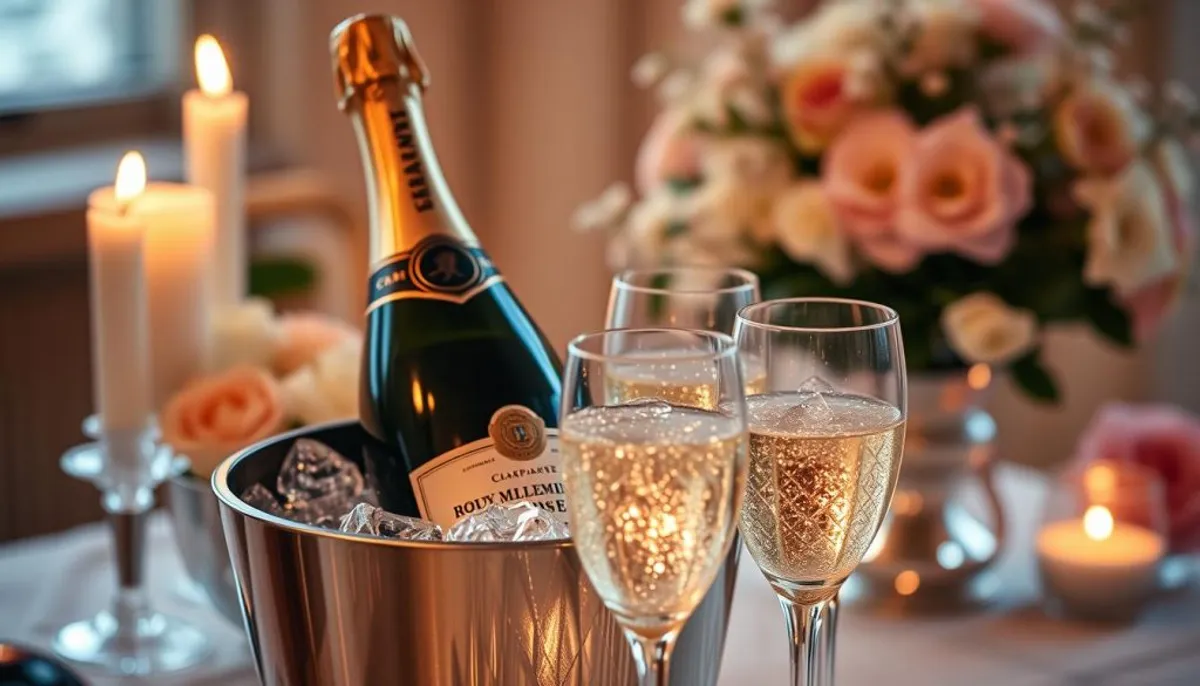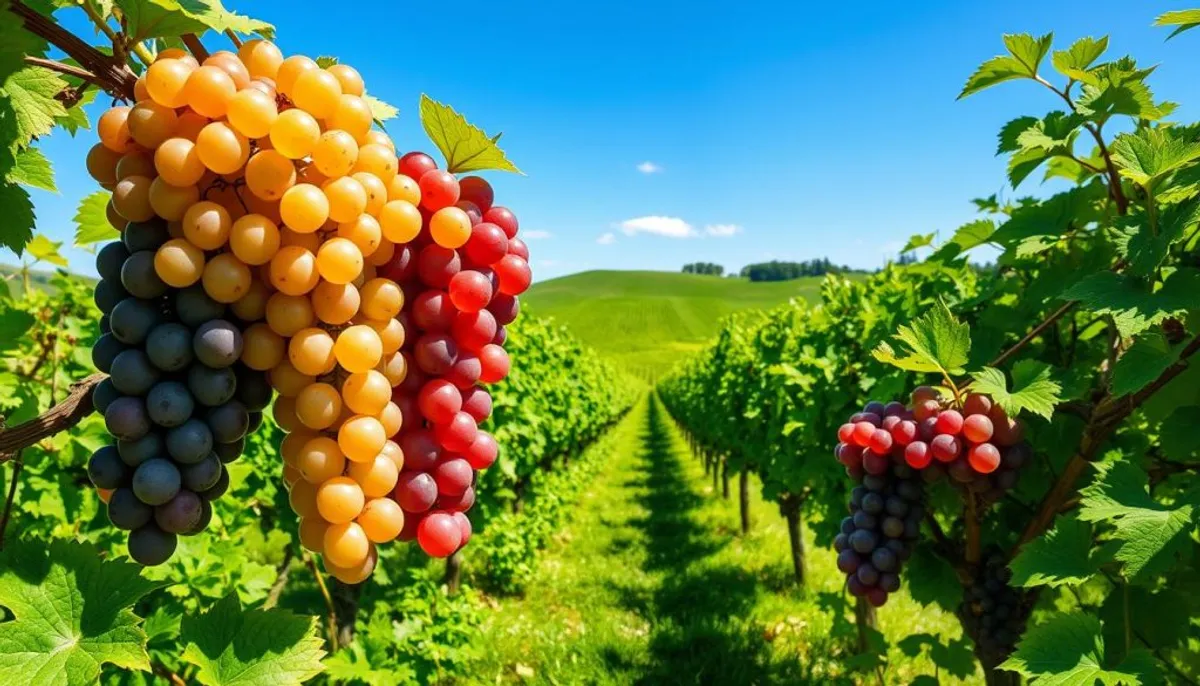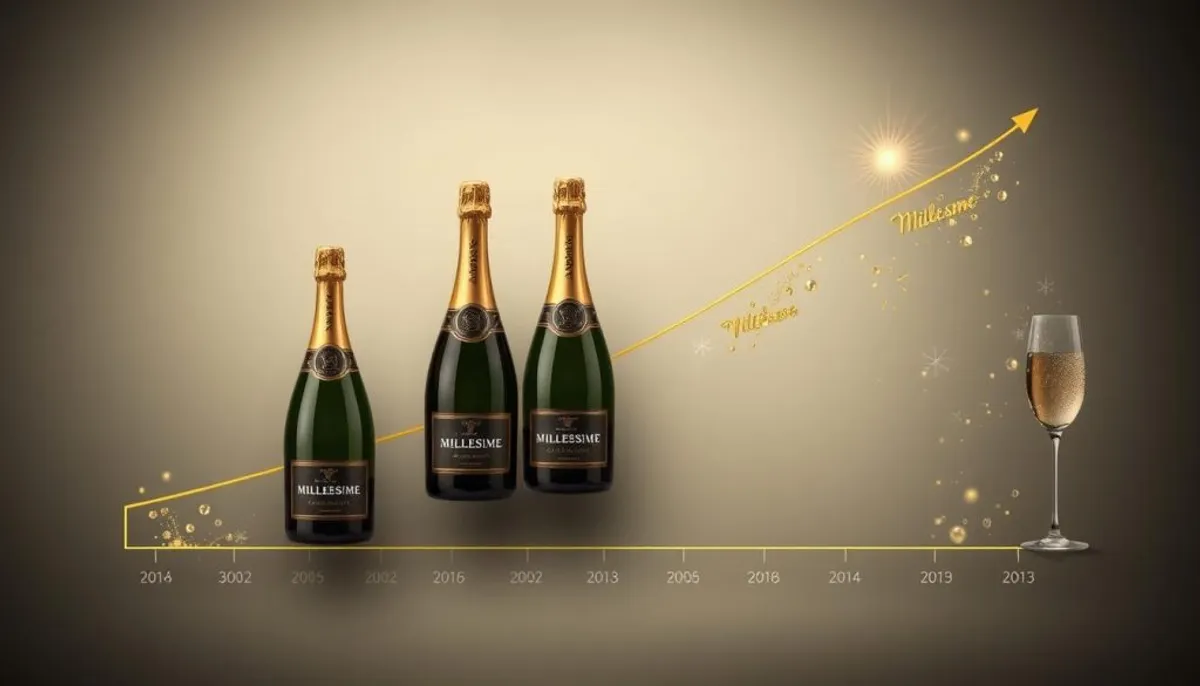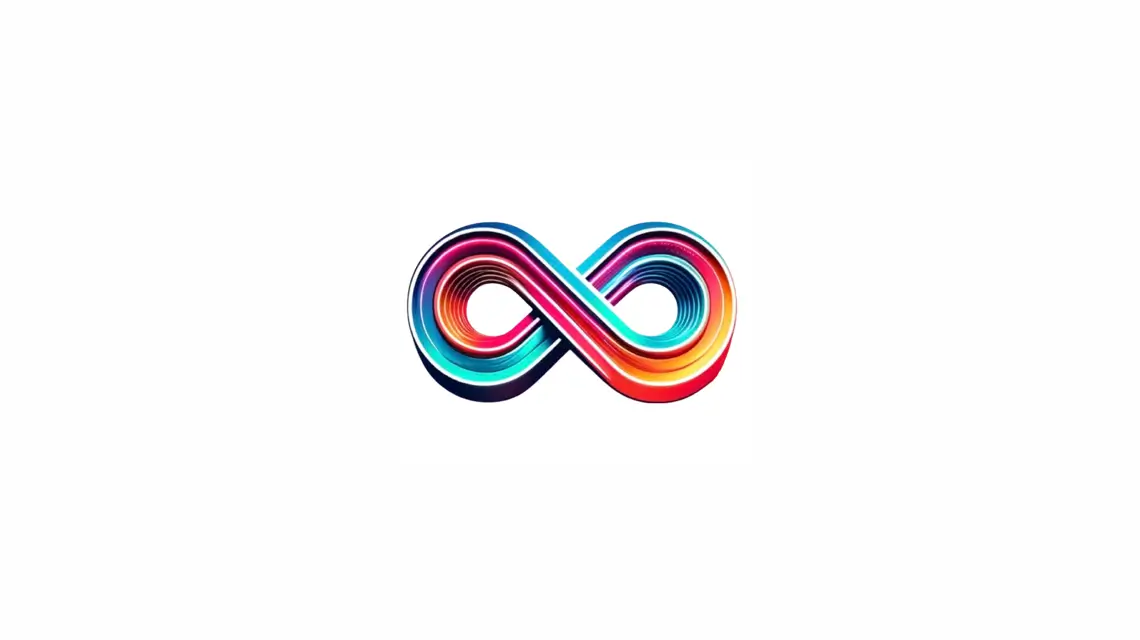Millesime champagne stands as the pinnacle of luxury sparkling wine, offering a distinct experience for special occasions. These vintage champagnes, made from grapes picked in exceptional years, account for only 10% of all champagne produced. For those looking to enjoy the essence of this luxury, champagne mp3 download can enhance the experience.

Connoisseurs of premium bubbly recognize Millesime champagnes as rare treasures. Typically, producers declare only three vintages per decade. This makes each bottle a reflection of that year’s climate. The Champagne region’s grapes, Pinot Noir, Chardonnay, and Pinot Meunier, are essential in crafting these exceptional vintages.
The Champagne Bouché Cuvée Saphir exemplifies this with a blend of 75% Chardonnay, 20% Pinot Noir, and 5% Pinot Meunier. This blend showcases the region’s commitment to creating complex, balanced champagnes for special occasions.
Vintage champagnes provide a window into the art of wine aging and quality. The 2008 Champagne Bouché Millesime Vintage, aged for 12 years before its release, received accolades from the prestigious Guide Hachette des Vins. It was praised for its remarkable refinement and elegance.
Key Takeaways
- Millesime champagne represents only 10% of total champagne production
- Producers typically declare three vintages per decade
- Pinot Noir, Chardonnay, and Pinot Meunier are key grape varieties
- Vintage champagnes reflect unique climate conditions of their harvest year
- The 2008 Champagne Bouché Millesime Vintage aged for 12 years before release
- Guide Hachette des Vins praises the 2008 vintage as refined and elegant
Understanding Millesime Champagne: A Mark of Excellence
Millesime champagne epitomizes the zenith of vintage champagne production. These bottles encapsulate the finest grapes from a singular harvest year. They capture the essence of that season’s unique characteristics.
What Makes a Champagne Vintage Special
Exceptional harvest years are pivotal in crafting outstanding vintage champagnes. These years are marked by ideal weather conditions, resulting in grapes with perfect balance and flavor. The Champagne region’s unique terroir, combined with expert winemaking techniques, contributes to the creation of these remarkable wines.
The Rarity Factor: Only 10% Make the Cut
Vintage champagne production is a selective process. Only about 10% of all champagne qualifies as vintage, making these bottles truly special. Champagne houses meticulously evaluate each harvest, declaring a vintage only when the grapes meet their exacting standards.
Climate’s Role in Vintage Quality
Climate is a pivotal champagne quality factor. Warm summers often lead to exceptional vintages, with long growing seasons and clear skies during harvest. These conditions allow Chardonnay and Pinot Noir grapes to develop complex flavors, resulting in champagnes of remarkable depth and character.
| Vintage Year | Climate Conditions | Quality Rating |
|---|---|---|
| 2008 | Cool summer, sunny autumn | Exceptional |
| 2012 | Challenging spring, ideal summer | Excellent |
| 2015 | Hot, dry summer | Very Good |
The Perfect Growing Conditions for Premium Vintages
The Champagne region’s unique terroir is pivotal in creating premium vintages. Spanning over 15,000 winegrowers, this area is renowned for its exceptional grape cultivation conditions. The climate, characterized by cool temperatures and limestone-rich soils, imbues millesime champagne with its distinctive character.
Vineyard management has evolved to improve grape quality, including innovations such as capsule champagne technology. Many producers now adopt sustainable and organic viticulture. Techniques such as soil grassing between vine rows foster biodiversity and reduce disease risks. This is crucial for houses like Charles Mignon, which only produces vintage champagne in years of exceptional grape quality.
The ideal conditions for premium vintages include warm summers and early harvests. These factors are essential for producing high-quality grapes, vital for the finest millesime champagnes. The synergy of climate, soil, and meticulous vineyard management results in champagnes exported to 190 countries. Brands like Gosset have seen significant growth in international sales.
| Factor | Impact on Vintage Quality |
|---|---|
| Soil Composition | Limestone-rich soil enhances mineral character |
| Climate | Cool temperatures promote slow, balanced ripening |
| Vineyard Practices | Sustainable methods improve grape health and quality |
Notable Millesime Champagne Years: 2008-2015
The span from 2008 to 2015 marked a zenith in champagne production, with years like 2008, 2012, and 2015 being celebrated for their distinctiveness and unparalleled quality. These vintages have garnered immense admiration from both aficionados and collectors, each year offering a unique flavor profile and texture. This exploration delves into the most memorable vintages that have etched their mark on the champagne world.
The Exceptional 2008 Vintage
The 2008 vintage is renowned for its classic characteristics in champagne production. The harvest was moderate, with grapes exhibiting low pH levels. This favored the cultivation of Pinot Noir and Pinot Meunier, leading to wines of unparalleled elegance and refinement. Despite economic hurdles, notably in the US market, the 2008 vintage remains a coveted gem for its unmatched quality.
The Remarkable 2012 Harvest
The 2012 vintage was a testament to the resilience of champagne producers. Overcoming early-season adversities, the harvest yielded wines with rich, balanced acidity. This year exemplifies champagne’s ability to thrive amidst climatic unpredictability, producing wines of depth and complexity that captivate connoisseurs.
The Promising 2015 Collection
The 2015 vintage was distinguished by a dry summer, which facilitated uniform ripening and smaller, healthier grapes. This led to wines with intense flavors and a promising aging potential. As these champagnes age, they are increasingly prized by collectors and enthusiasts alike.
In comparing the top champagne years, 2008, 2012, and 2015 emerge as the most notable. Each vintage captures the essence of its growing conditions, offering wine enthusiasts a rare opportunity to savor the decade’s finest champagnes. These years have played a pivotal role in elevating champagne from a mere luxury item to a serious wine category, appealing to both casual drinkers and seasoned connoisseurs.
Premier Cru and Grand Cru Vintage Selections
Luxury champagne brands present their most exquisite selections of authentic french champagne through premier cru vintages and grand cru champagnes. These labels signify the highest echelons of quality, hailing from elite vineyards and crafted with meticulous attention to detail.
Top Houses and Their Signature Vintages
The Coutier family, renowned for their grand cru champagne, oversees 40 plots in Ambonnay. Their vines, averaging 38 years in age, yield approximately 60,000 bottles each year. The estate embarked on organic conversion in 2019, with the goal of achieving full certification by 2023. Their non-vintage Brut Tradition is a blend of 75% Pinot Noir and 25% Chardonnay. The Brut Rosé, on the other hand, combines these grapes with still red Pinot.
Prestigious Labels and Limited Editions
Coutier’s premier cru vintages include the Brut Millésime, ideal for aging, and the Cuvée Henri III, a 100% Pinot Noir aged without malolactic fermentation. In 2020, they unveiled “La Pierre Aux Larrons,” a single-vineyard Chardonnay from a historic 1948 plot. Another notable offering is Champagne Michel Arnould’s Carte d’Or Grand Cru Millésime, a 50/50 blend of Pinot Noir and Chardonnay. This 2016 vintage, aged for at least 4 years, boasts 7.0 g/l sugar content and is best served at 8-10°C.
| Champagne | Blend | Aging | Sugar Content |
|---|---|---|---|
| Coutier Brut Tradition | 75% Pinot Noir, 25% Chardonnay | Varies | Varies |
| Cuvée Henri III | 100% Pinot Noir | 1 year in barrels | Varies |
| Michel Arnould Carte d’Or | 50% Pinot Noir, 50% Chardonnay | Minimum 4 years | 7.0 g/l |
Regional Influences on Vintage Quality
The Champagne region’s diverse terroir significantly impacts vintage quality. Each sub-region brings its own distinct characteristics to the final product. This diversity leads to a wide range of regional champagne styles.
The Côte des Blancs, celebrated for its chalk-rich soil, is renowned for exceptional Chardonnay-based vintages. These wines are known for their crisp, mineral-driven profiles, ideal for aging. On the other hand, the Montagne de Reims excels in Pinot Noir production. It yields robust and complex vintages.
The Côte des Bar, situated in the Aube department, offers a unique terroir influence. Its Kimmeridgian limestone soil contributes to distinctive vintages with a higher proportion of Pinot Noir. These champagnes often showcase a fruity character with a subtle mineral undertone.
| Sub-region | Dominant Grape | Soil Type | Style Characteristics |
|---|---|---|---|
| Côte des Blancs | Chardonnay | Chalk-rich | Crisp, mineral-driven |
| Montagne de Reims | Pinot Noir | Limestone, chalk | Robust, complex |
| Côte des Bar | Pinot Noir | Kimmeridgian limestone | Fruity, subtle minerality |
The terroir influence goes beyond soil composition. Each sub-region’s unique microclimate impacts grape ripening and acidity levels. This interplay of factors creates a rich tapestry of regional champagne styles. Each style tells a unique story of place and time.
Grape Varieties in Vintage Champagne Production
The art of blending for vintage champagne relies on three main champagne grape varieties. Each contributes unique qualities to create exceptional single-varietal vintages and complex blends.

Pinot Noir’s Contribution
Pinot Noir reigns as the most planted grape in Champagne, covering 38% of vineyards. It thrives in Montagne de Reims and Côte des Bar. This red grape adds structure and depth to vintage champagnes, forming the backbone of many prestigious blends.
Chardonnay’s Elegance
Chardonnay graces 28% of Champagne’s vineyards, flourishing in villages like Avize and Le Mesnil-sur-Oger. It brings elegance and aging potential to vintage champagnes. Chardonnay shines in Blanc de Blancs, showcasing its finesse in single-varietal vintages.
Pinot Meunier’s Role
Pinot Meunier accounts for 34% of Champagne’s plantings, mainly in the Marne Valley. Though less common in vintage champagnes, it adds fruitiness and roundness to blends. Some producers craft exceptional single-varietal vintages from this versatile grape.
Blending for vintage champagne is an art form. Over 90% of champagnes are blended cuvées, combining these varieties to create complex flavors. Single-varietal vintages, while rare, offer a pure expression of each grape’s character in exceptional years.
Aging Process and Its Impact on Vintage Quality
The champagne aging process is pivotal in shaping the distinct characteristics of vintage champagne. This maturation, spanning from 5 to 10 years or more, enables the wine to evolve into a complex entity. It diverges from non-vintage champagnes, offering a richer tapestry of flavors and aromas.
Lees aging is instrumental in crafting the unique taste profile of vintage champagne. The wine’s interaction with dead yeast cells during this phase imparts profound, nuanced flavors. Autolysis, a byproduct of lees aging, is responsible for the brioche and nutty undertones that define high-quality vintage champagnes.
Champagne houses vary in their aging durations. Jean-Claude Vallois, for instance, ensures a minimum of four years of aging before releasing his champagnes. This extended period enhances the wine’s aromatic and taste potential, culminating in a more refined and complex product.
| Champagne Type | Minimum Aging Period | Typical Cellaring Time |
|---|---|---|
| Non-Vintage | 12 months on lees | 3-5 years |
| Vintage | 3 years on lees | 10-20 years or more |
The aging process profoundly influences the texture, aroma, and flavor profile of vintage champagne. As it matures, the wine’s mouthfeel becomes more refined, and its flavor spectrum broadens. This evolution is why vintage champagnes are often preferred for cellaring and special occasions, surpassing non-vintage champagnes in quality.
Pairing Vintage Champagne with Celebrations
Vintage champagne elevates any celebration, making it perfect for special occasions. Its versatility shines through various champagne food pairings, enhancing the dining experience from start to finish. Additionally, pickling with champagne vinegar can add a unique twist to dishes that complement this exquisite beverage.
Wedding and Anniversary Selections
For weddings and anniversaries, celebration champagne adds a touch of luxury. Rare vintages, like those from Piper-Heidsieck, make memorable toasts. The Piper-Heidsieck Rare Brut Millesime 1976 saw a 16% price increase from 2020 to 2021, reaching $473. This showcases the growing value of vintage champagne for events.
Corporate Event Recommendations
Corporate events benefit from prestigious vintage champagnes that impress clients and partners. Consider these unique pairings:
- Blanc de Blancs with lobster mac and cheese
- Blanc de Noirs with cheese and charcuterie boards
- Rosé Champagne with brioche burgers
- Brut Nature with a tinned fish board
- Extra Brut with poké and crispy rice
- Brut Champagne with hot fried chicken sandwiches
These unexpected pairings create memorable experiences. For a unique touch, try the Deutz 2015 Rosé Millesime. It contains over 50% Pinot Noir in the base wine, with an additional 10% still red Pinot Noir. This champagne offers complexity that increases with bottle age, making it an excellent choice for sophisticated events.
Investment Value of Vintage Champagne
Vintage champagne has emerged as a lucrative investment opportunity. The champagne investment market has seen significant growth, with exports surging 30% in 2021 to 320 million bottles. This boom generated over $6 billion in annual revenue, highlighting the increasing appeal of collectible vintages.
Wine auction prices for prestigious champagnes have skyrocketed. A prime example is the 1928 Krug Brut Vintage, which fetched an astounding $22,670 at auction. This trend underscores the potential for substantial returns on well-chosen champagne investments.

The Liv-ex Champagne 50 benchmark rose 94% between April 2020 and October 2022, outperforming other wine regions. Specific vintages have shown remarkable appreciation. The 2008 Krug Vintage Brut, for instance, saw a staggering 183% increase in value from 2020 to 2022.
| Vintage | Price Appreciation (2020-2022) |
|---|---|
| 1993 Dom Perignon Oenotheque Rose | 98% |
| 2008 Krug Vintage Brut | 183% |
| 2008 Louis Roederer Cristal | 100% (in first year of trading) |
Investors are increasingly drawn to champagne due to its stable growth and limited supply. The market size is predicted to grow at a 6.2% CAGR between 2020-2025. To maximize returns, focus on prestigious labels, exceptional vintages, and proper storage conditions.
Storage and Serving Tips for Vintage Champagne
Proper champagne storage and serving temperature are essential for preserving the quality of your vintage champagne. Let’s explore some essential tips for vintage champagne care to ensure you enjoy every sip at its best.
Optimal Temperature Guidelines
The ideal storage temperature for champagne ranges from 10 to 12°C (50-54°F). This cool environment helps maintain the wine’s integrity and flavor profile. When it’s time to serve, chill your vintage champagne to 8-10°C (46-50°F) to fully appreciate its complexity.
Proper Storage Conditions
Store your champagne in a dark, vibration-free area with 60-70% humidity. Keep bottles horizontal to keep the cork moist. For those living in apartments, wine refrigerators offer a perfect solution for maintaining constant temperatures.
Serving Suggestions
Use proper champagne flutes to enhance the bouquet and preserve bubbles. Allow the wine to breathe briefly before serving to reveal its full aromatic potential. Remember, once opened, champagne should be consumed within a few days, even when refrigerated.
| Champagne Type | Storage Duration | Best Storage Method |
|---|---|---|
| Non-Vintage | 3-5 years | Wine rack or refrigerator |
| Vintage | 5-10 years | Wine cellar or refrigerator |
| Luxury Vintage | 20+ years | Professional wine storage |
| Rosé | 2 years | Wine refrigerator |
Conclusion
Millesime champagne epitomizes the pinnacle of sparkling wines, offering an unparalleled luxury experience. These rare treasures, crafted in exceptional years, showcase the zenith of winemaking expertise. With only 10% of champagne production classified as vintage, each bottle encapsulates the essence of its harvest year.
The selection of vintage champagnes is a meticulous process, ensuring only the highest-quality grapes are chosen. For example, the 2014 and 2015 vintages boasted average potential alcohol levels of 10% and 10.5% respectively. The 2015 crop, with its yield of 10,602kg/ha, exemplifies the dedication to excellence. This rigorous focus on quality yields wines of unmatched caliber, ideal for any connoisseur of celebration wines.
From the 2014 vintage’s crisp, fruity notes to the 2015’s complex, varied profile, each year offers a unique flavor journey. Notable examples, such as Ruinart Millésime 2015 and Taittinger Brut Millésime 2014, consistently receive high accolades, scoring 94 points in expert tastings. Whether celebrating a milestone or simply savoring life’s finer moments, a vintage champagne guarantees an extraordinary tasting experience. It transforms any occasion into a grand celebration.
RelatedRelated articles



